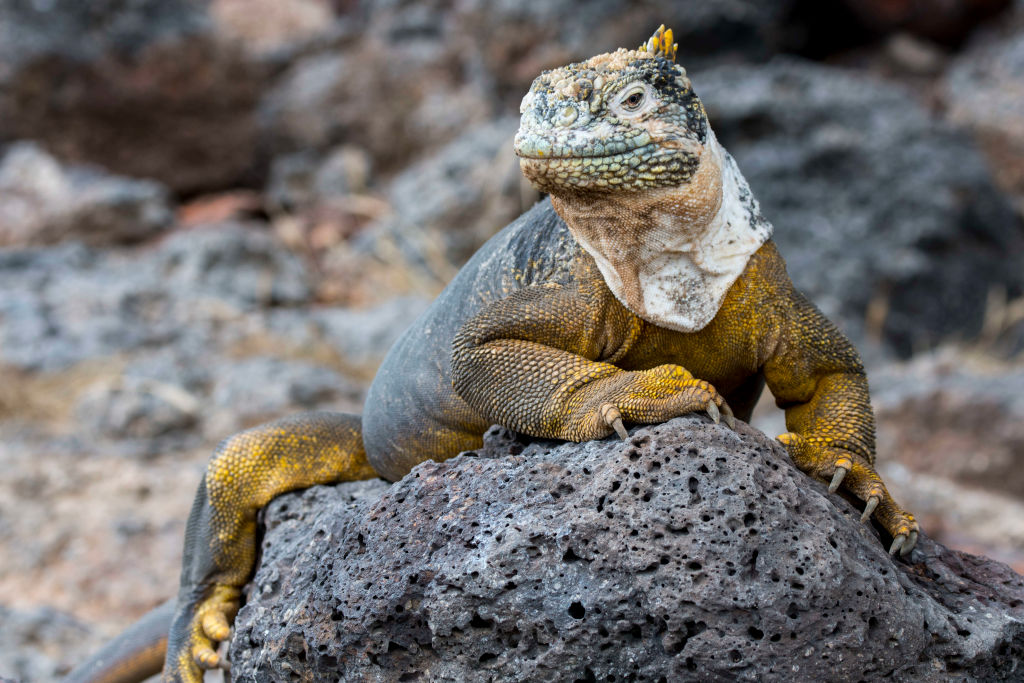
Some 200 years after their population was decimated by feral pigs, iguanas are being reintroduced to an island in the Galapagos archipelago, Agence France-Presse reports.
Conservationists have released 1,436 Galapagos land iguanas onto Santiago Island, authorities said on Monday. The lizard species’ last recorded sighting there was made by British naturalist Charles Darwin in 1835.
“Almost two centuries later, this ecosystem will once again count on this species through the restoration initiative,” the park authority said in a statement. The initiative also aims to protect the existing population of an estimated 5,000 iguanas on the nearby North Seymour Island, AFP reports.
The herbivorous iguanas once served a vital role on Santiago Island helping to disperse seeds in areas without vegetation. But the species became extinct after the introduction of invasive predators, such as the feral pig, said Jorge Carrión, director of the Galapagos National Park. Feral pigs were eradicated from the island in 2001 in a separate project.
A volcanic archipelago 600 miles off the coast of Ecuador, the Galapagos are renowned for their unique biodiversity as well as their fragile ecosystem. It was on this archipelago that Darwin made observations that contributed to his theory of evolution. The region is a UNESCO World Heritage site.
More Must-Reads from TIME
- Why Trump’s Message Worked on Latino Men
- What Trump’s Win Could Mean for Housing
- The 100 Must-Read Books of 2024
- Sleep Doctors Share the 1 Tip That’s Changed Their Lives
- Column: Let’s Bring Back Romance
- What It’s Like to Have Long COVID As a Kid
- FX’s Say Nothing Is the Must-Watch Political Thriller of 2024
- Merle Bombardieri Is Helping People Make the Baby Decision
Contact us at letters@time.com